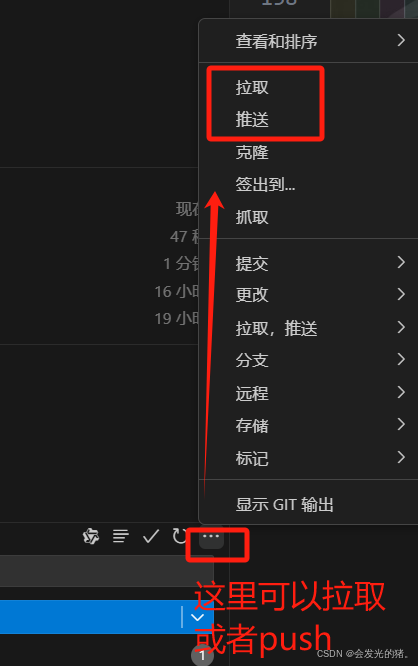
🌈Don’t worry , just coding!
内耗与overthinking只会削弱你的精力,虚度你的光阴,每天迈出一小步,回头时发现已经走了很远。
📗概念
在 Go 中,有状态的 goroutines(Stateful Goroutines)是指那些能够保留状态信息的 goroutines。这种设计模式通常用于需要在多个调用之间维护状态的场景,例如处理请求、管理连接、维护计数器等。
💻代码
package main//导入math/rand 用于生成随机数。
//sync/atomic 提供原子操作的支持。
import ("fmt""math/rand""sync/atomic""time"
)// readOp 结构体用于表示读操作,包含一个键 key 和一个响应通道 resp。
type readOp struct {key intresp chan int
}// readOp 结构体用于表示读操作,包含一个键 key 和一个响应通道 resp。
type writeOp struct {key intval intresp chan bool
}func main() {//声明两个无符号整型变量 readOps 和 writeOps,用于计数读写操作。var readOps uint64var writeOps uint64//创建两个通道 reads 和 writes,分别用于接收读操作和写操作。reads := make(chan readOp)writes := make(chan writeOp)go func() {//启动一个 goroutine,维护一个状态 state,这是一个映射,存储键值对。var state = make(map[int]int)for {//使用 select 语句监听 reads 和 writes 通道:select {//如果接收到读操作,从 state 中读取对应的值并通过 resp 通道返回。case read := <-reads:read.resp <- state[read.key]//如果接收到写操作,将值写入 state 中,并通过 resp 通道返回操作成功的信号。case write := <-writes:state[write.key] = write.valwrite.resp <- true}}}()//启动 100 个 goroutinefor r := 0; r < 100; r++ {go func() {for {//创建一个随机键的 readOp 实例并发送到 reads 通道。read := readOp{key: rand.Intn(5),resp: make(chan int)}reads <- read<-read.resp//创建一个随机键的 readOp 实例并发送到 reads 通道。atomic.AddUint64(&readOps, 1)//每次循环后休眠 1 毫秒。time.Sleep(time.Millisecond)}}()}//启动 10 个 goroutinefor w := 0; w < 10; w++ {go func() {for {//创建一个随机键和随机值的 writeOp 实例并发送到 writes 通道。write := writeOp{key: rand.Intn(5),val: rand.Intn(100),resp: make(chan bool)}writes <- write<-write.resp//等待响应并通过原子操作增加 writeOps 的计数。atomic.AddUint64(&writeOps, 1)//每次循环后休眠 1 毫秒。time.Sleep(time.Millisecond)}}()}time.Sleep(time.Second)//使用 atomic.LoadUint64 获取最终的读写操作计数并打印。readOpsFinal := atomic.LoadUint64(&readOps)fmt.Println("readOps:", readOpsFinal)writeOpsFinal := atomic.LoadUint64(&writeOps)fmt.Println("writeOps:", writeOpsFinal)
}
//输出
//readOps: 81299
//writeOps: 8163
有状态的 Goroutines 的特点
- 状态管理:有状态的 goroutines 可以在其生命周期内维护状态信息,这样它们可以根据之前的操作或输入做出决策。
- 并发安全:在并发环境中,状态的管理需要确保安全性,通常使用通道、互斥锁或其他同步机制来保护共享状态。
- 封装性:将状态和行为封装在 goroutine 内部,使得外部无法直接访问状态,从而增强了模块化和封装性。
🔍理解
- 并发读写:代码实现了一个简单的并发读写操作,使用通道来协调读写请求。
- 原子操作:使用 sync/atomic 包中的原子操作来安全地更新读写计数,避免数据竞争。
- 随机访问:读和写操作都是基于随机生成的键值,使得操作更加多样化。
- 无锁设计:通过通道和 goroutine 的组合,避免了传统的锁机制,简化了并发控制。
💪无人扶我青云志,我自踏雪至山巅。






